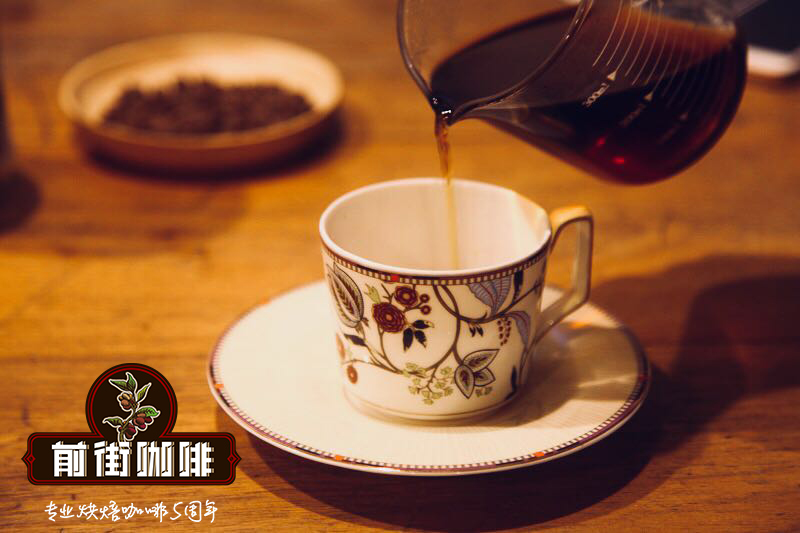What is the special flavor of Harald coffee? where is the price of Harald coffee produced in Ethiopia?

Professional coffee knowledge exchange more coffee bean information please follow the coffee workshop (Wechat official account cafe_style)
Ethiopia was the first country to teach me what regional and wide differences mean for cups. As I walk along my own path, it helps me teach my coffee taste, I think, no matter where I am now. Harald Coffee was the first coffee I really knew. This is what we sell and bake, and it's always easy to pick out on the cupping table. If you can pick Harald from the lineup, you will feel like you really know what you are doing, but as long as you have half an ounce of ability, it doesn't make that much sense. Harald is still a good teacher and I think there are some dunks in any form of education that can do wonders for your confidence. Although for a bronze cup, once you pass Harald, it's always natural, you & # 39; I have a variety of tastes and characteristics. And those coffees may also be natural, although they are often fully washed coffee, which allows you to find a wider sense of beauty in Ethiopia.
A coffee bean sample tray with four labels on it
When I learned to have a cup of coffee, picking a Tarrazus from the Tresrios Cafe seemed like graduate school, while the table was filled with Ethiopian coffee, and a cup almost always pulled out Harald coffee, and was often able to at least tell Sidamo's Yirgacheffe and say what was natural.
This meeting should focus on the elusive taste of Harald coffee. Although I agree that it has been more elusive recently than it was a decade ago, I know it can still be found. I'm looking forward to discussing why people think that way. You want my theory? I think it's complicated. Come on, I went to Evergreen.-what do you expect? This is the state of the soil, and after years of calling Ethiopian coffee passive or traditional organic matter, the soil is different. I have every chance to be corrected on this point, because I haven't really confirmed it here until now, but I know it's about the soil-you have to pay great attention to the soil whenever you plant anything. My hunch is that the soil has been around for a long time and has exhausted enough important ingredients to produce excellent coffee. This is also the weather-it affects not only the growth and dryness of Hara coffee, but also the coffee waiting to be transported or sitting in the warehouse. The weather can change everything. It can expand or shrink the developing ocean. In the early and late stages of the process, it may rain too much or too little. As we learned in 2007, things may also be messed up after picking. Basically, I asked to look at charts of rainfall and general time over the past three decades, as well as charts showing temperature fluctuations from high to low. How these curves change from year to year. These are my hunches.
What you did there! No matter what you are growing, soil will play a huge role. Plants actually change the pH of the soil and steal some nutrients that other plants delay. Corn, for example, absorbs a lot of nitrogen from the soil, so farmers plant things like soybeans to replace it every few years. I don't know what ingredient coffee is stolen, but it is worthy of further study. Just in case you want to know:)
Important Notice :
前街咖啡 FrontStreet Coffee has moved to new addredd:
FrontStreet Coffee Address: 315,Donghua East Road,GuangZhou
Tel:020 38364473
- Prev

How are Kopi Luwak grades divided into Kopi Luwak grading standards? what grades of cat poop coffee beans compare?
Professional coffee knowledge exchange more coffee bean information Please follow the coffee workshop (Wechat official account cafe_style) Kopi Luwak (Kopi Luwak), which refers to coffee made from coffee beans excreted by civet feces. Kopi Luwak is a kind of coffee, not a brand. There are many different brands, quality and prices of Kopi Luwak, how to choose? Different kinds of coffee
- Next

How do you brew Harald coffee? can Harald coffee be made with milk? what's the difference in flavor?
For more information on coffee beans, please follow the coffee workshop (Wechat official account cafe_style) Ethiopia produces very complex coffee, so there are different planting areas and varieties that produce unique and unique characteristics in their processed coffee-Harald coffee from natural simplicity and wine, interesting tropical fruits, plums and plums from Lekempti.
Related
- Beginners will see the "Coffee pull flower" guide!
- What is the difference between ice blog purified milk and ordinary milk coffee?
- Why is the Philippines the largest producer of crops in Liberia?
- For coffee extraction, should the fine powder be retained?
- How does extracted espresso fill pressed powder? How much strength does it take to press the powder?
- How to make jasmine cold extract coffee? Is the jasmine + latte good?
- Will this little toy really make the coffee taste better? How does Lily Drip affect coffee extraction?
- Will the action of slapping the filter cup also affect coffee extraction?
- What's the difference between powder-to-water ratio and powder-to-liquid ratio?
- What is the Ethiopian local species? What does it have to do with Heirloom native species?

